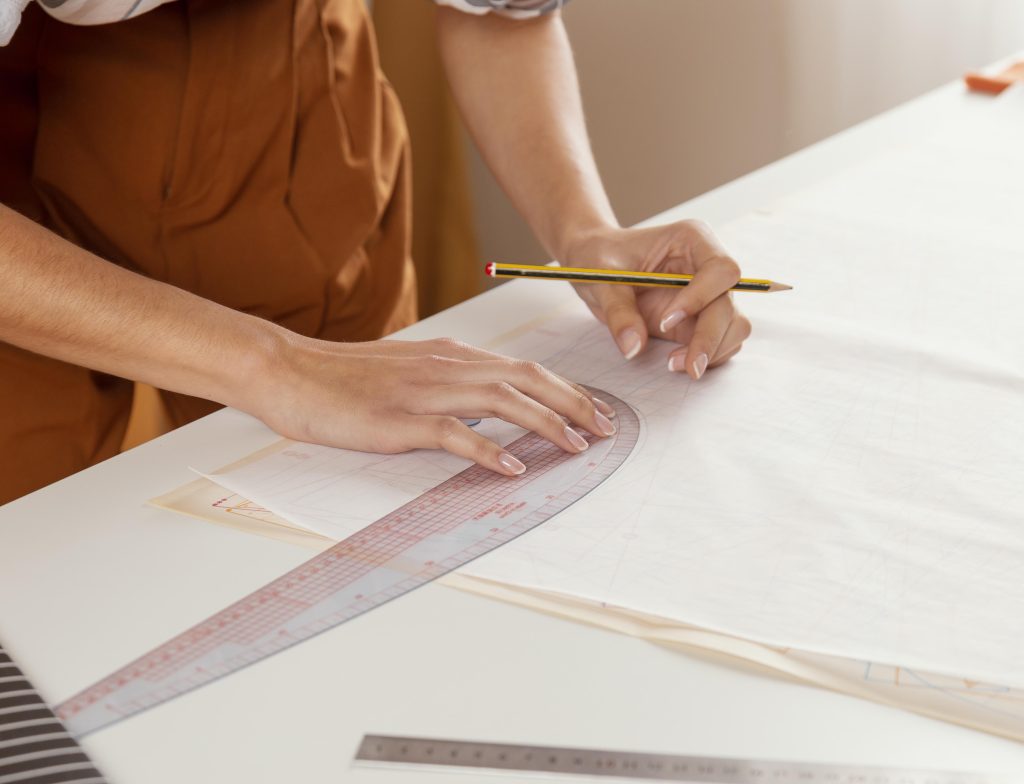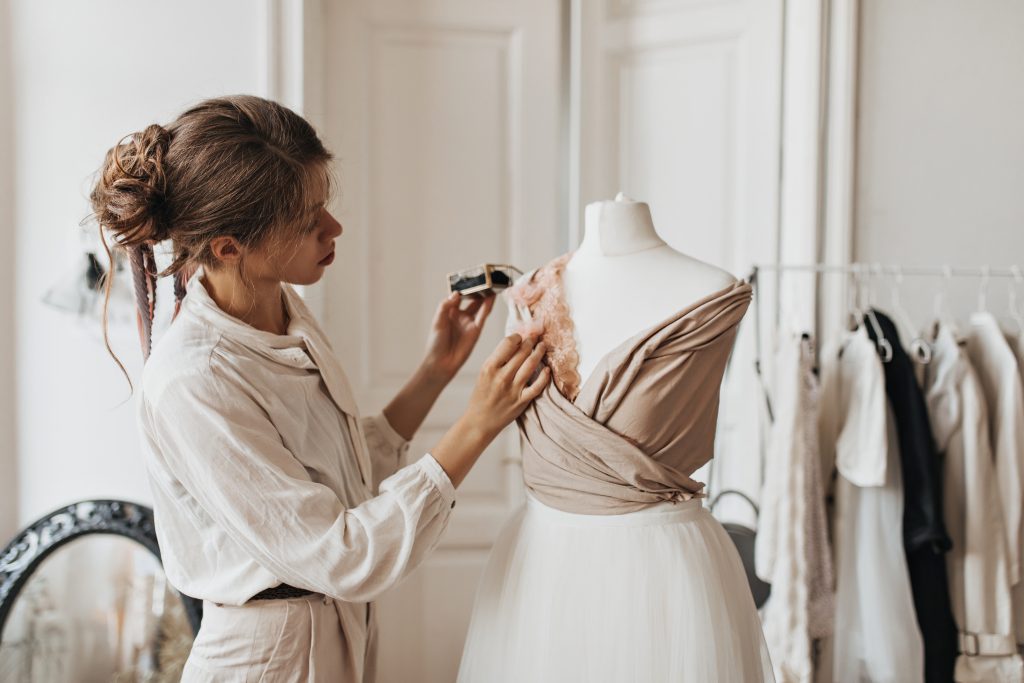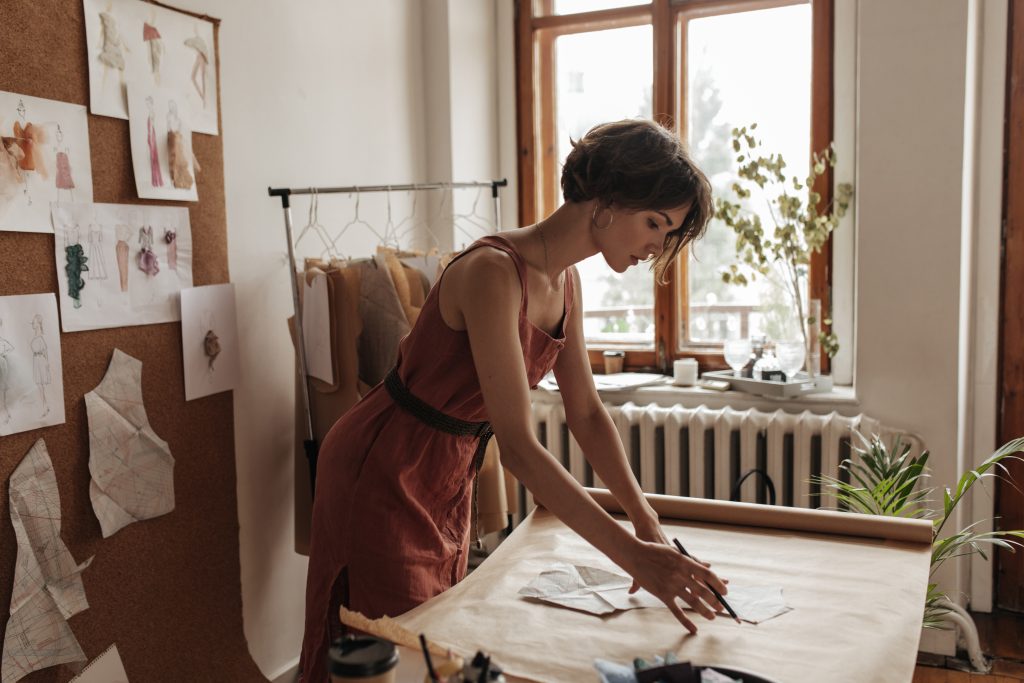Summary:
- Modeling plays a vital role in the creation of a fashion collection;
- Two of the most used modeling techniques in fashion are flat pattern making and moulage (or draping);
- Experience the benefits of Audaces360 multi-solution and manage each stage of your clothing production. Get the free trial now!

Modeling is an important stage in the fashion production process. The choice of modeling technique employed by the designer may vary depending on the garment or the preference of the professional responsible for creating the piece.
Through modeling, the designer transforms the technical drawing into a pattern, allowing for better visualization of the garment’s details and necessary adjustments, such as its fit and wearability.
Learn more about the main types of modeling techniques and their benefits, so you can decide which one best fits your production process.
Happy reading!
Sumário
Modeling technique: discover the best one for your clothing production
Choosing the right technique is crucial to create garments that meet your company’s requirements. With several options available, you must select the best one for your specific needs.
Different factors, such as the garment type, fabric selection, and the pattern maker’s skill level, influence the choice of modeling methods.
Popular options include flat patterns and moulage (also known as draping) – a technique commonly used by haute couture brands, which shapes the fabric directly onto the mannequin.
Digital modeling is another efficient option that allows you to create models in software, streamlining the process. It is one of the fastest and most efficient techniques used in fashion making.
Now that you know what the main modeling techniques are, explore them to learn how they work and identify which one suits your clothing production best.
Learn more: 9 fabrics with the perfect fit to use in your fashion collection
Flat pattern making

Flat pattern making is a technique for creating two-dimensional patterns using paper, pencils, and rulers.
In this method, pieces are created from a flat design and then adjusted to fit the body through mathematical calculations.
The precision with which flat modeling creates patterns results in a perfect fit for the final piece.
The versatility of this technique is also a benefit, as it can be used to create simple or complex pieces, such as coats and dresses.
Moreover, the flat pattern allows for the creation of more efficient patterns that use less fabric and generate fewer leftovers.
However, this method also has its drawbacks. It is limited in creating shapes, making it challenging to design intricate and moving shapes.
Additionally, the technique requires significant skill and knowledge in calculus and geometry, as well as a lot of practice to obtain a precise pattern adapted to the body. It also takes longer to create, especially for pieces like blazers.
If you are interested in making flat patterns, follow these basic steps:
Take accurate body measurements
For a garment to fit perfectly, accurate measurements of each body part that the garment covers are fundamental. These measurements typically include the bust, waist, hips, and other key areas.
Create the pattern block template
Once you have the measurements, it’s time to create a drawing on paper that accurately reflects the lines and proportions of the garment. Using them, you can then make the necessary calculations to adjust the design to fit the body perfectly.
Adjust the pattern block
After the pattern is complete, try it on the body to see if any adjustments are necessary. It’s common to make minor modifications to the pattern until it fits perfectly.
Cut the fabric
Now that the pattern is finished, you can cut the fabric according to the designed pieces. Make sure to follow the cutting and assembly guidelines carefully to ensure the best fit for the final garment.
Learn more: Find out which textile machines are worth investing in to boost your fashion production
Three-dimensional modeling or moulage

Three-dimensional modeling, also known as moulage or draping, is a technique that involves creating patterns directly on a mannequin using a malleable fabric such as muslin. This method allows the fabric to be molded over the mannequin, cut, and sewn to form the garment.
One of the main benefits of three-dimensional modeling is the creative freedom it provides. It enables designers to create more organic and fluid shapes, which can be challenging to achieve with other methods.
The precision of the technique is another advantage as the pattern is created directly on the mannequin, resulting in a better fit of the final product.
Moreover, three-dimensional modeling is faster and more efficient, especially for complex pieces, as it allows designers to test the pattern on the right spot and make immediate adjustments.
However, like other techniques, this one has some drawbacks too. It requires more fabric consumption compared to other methods as the pattern is created on the mannequin.
Additionally, reproducing the pattern for other pieces can be challenging, making it difficult for large-scale production.
To do three-dimensional modeling, designers must have a good understanding of draping and sewing techniques.
See what else it takes to master this type of modeling:
Prepare the mannequin
Prepare the mannequin by ensuring it is in the correct position and adjusted to the measurements of the body on which the garment will be created.
Cut the fabric
For three-dimensional modeling or moulage, a piece of malleable fabric (such as muslin) must be cut, which should be large enough to cover the specific area of the body that will be modeled.
Shaping the fabric on the mannequin
Molding the fabric on the mannequin involves draping the malleable fabric onto the mannequin and using pins to hold it in place while shaping it to form the desired garment structure.
Fabric cutting and sewing
Once the fabric is shaped on the mannequin, it can be cut into pieces and sewn together to form the final piece.
Finish the piece
After sewing, it’s time to add the finishing touches and make the final adjustments to ensure the garment fits perfectly.
Learn more: Learn why regular maintenance is crucial for fabric cutting machines
When to invest in each technique?

When deciding which modeling technique to use, several factors should be taken into account. It’s important to consider activities that can impact daily modeling work, such as:
Understand your needs and limitations
Before choosing a modeling technique, take time to understand your needs and limitations, but also be mindful of your customers’ expectations too.
Therefore, consider the amount of fabric you have available, the volume of production you need to achieve, and any other pain points or needs you may have, or your customers may require.
Learn more: Find out how – and why – to apply textile automation in your company
Know the pros and cons of each
As previously mentioned, it’s important to have a good understanding of the different modeling techniques available. By doing so, you can make an informed decision on which technique is more appropriate for your production.
For instance, the level of design complexity of the garment might influence this decision. For simpler and straight pieces, flat patterns may be the best option, while more complex shapes may require the use of moulage.
Learn how to combine the techniques
It is possible to combine various modeling techniques to achieve the desired results. By mixing them, you can take advantage of the strengths of each one to create high-quality pieces.
But don’t forget the skill level required for each modeling technique. Calculus, geometry, and a creative eye to shape the fabrics are some of the top qualities to combine more than one method when making patterns.
Learn more: What is takt time and how to calculate it in your company?
Experience Audaces solutions for clothing pattern making
If you’re looking to streamline your fashion design process, Audaces software offer innovative solutions to help you achieve greater agility and efficiency.
With Audaces, you can create custom-made patterns, optimize fabric usage, and minimize waste.
Check out how you can enhance your workflow and bring your designs to life with greater ease and precision!
Audaces Digiflash
This is an innovative tool that captures high-precision images of physical clothing patterns at lightning speed, converting them into editable digital files.
Audaces Digiflash enables pattern makers to transform paper patterns into digital formats, which can be used on cutting machines and printers.
You can easily edit patterns, adjust measurements, and create new designs quickly and efficiently.
This advanced solution not only streamlines the pattern-making process but also helps to reduce costs and enhance the overall quality of the final product.
Audaces Pattern
Audaces Pattern is a cutting-edge technology that offers an efficient solution for those who want to optimize production time and reduce costs.
With its simple and user-friendly interface, creating digital patterns is now 70% faster than doing it manually.
One of the biggest advantages of Audaces Pattern is its automatic measurement table, which allows for the development of complex patterns with ease.
This feature streamlines the grading process and eliminates the need for paper, making the entire production process more sustainable.
Want to learn more about digital modeling and how it can revolutionize your production processes? Then download our free e-book now!
FAQ
The best modeling technique will depend on various factors, such as the type of garment, the desired fit and style, the available materials and resources, and the production volume. It’s important to evaluate it all to choose a technique that best suits your specific needs.
Flat pattern making is a method of creating two-dimensional patterns that can be transformed into a finished garment. It involves drafting the pattern on paper, based on measurements and calculations, and then manipulating it to achieve the desired shape and fit.
Moulage is a three-dimensional modeling technique that consists of draping a malleable fabric (such as muslin, used as a foundation) directly on a mannequin to create a pattern that mimics the body’s curves and shapes. This method requires a good understanding of fabric behavior and drape.










